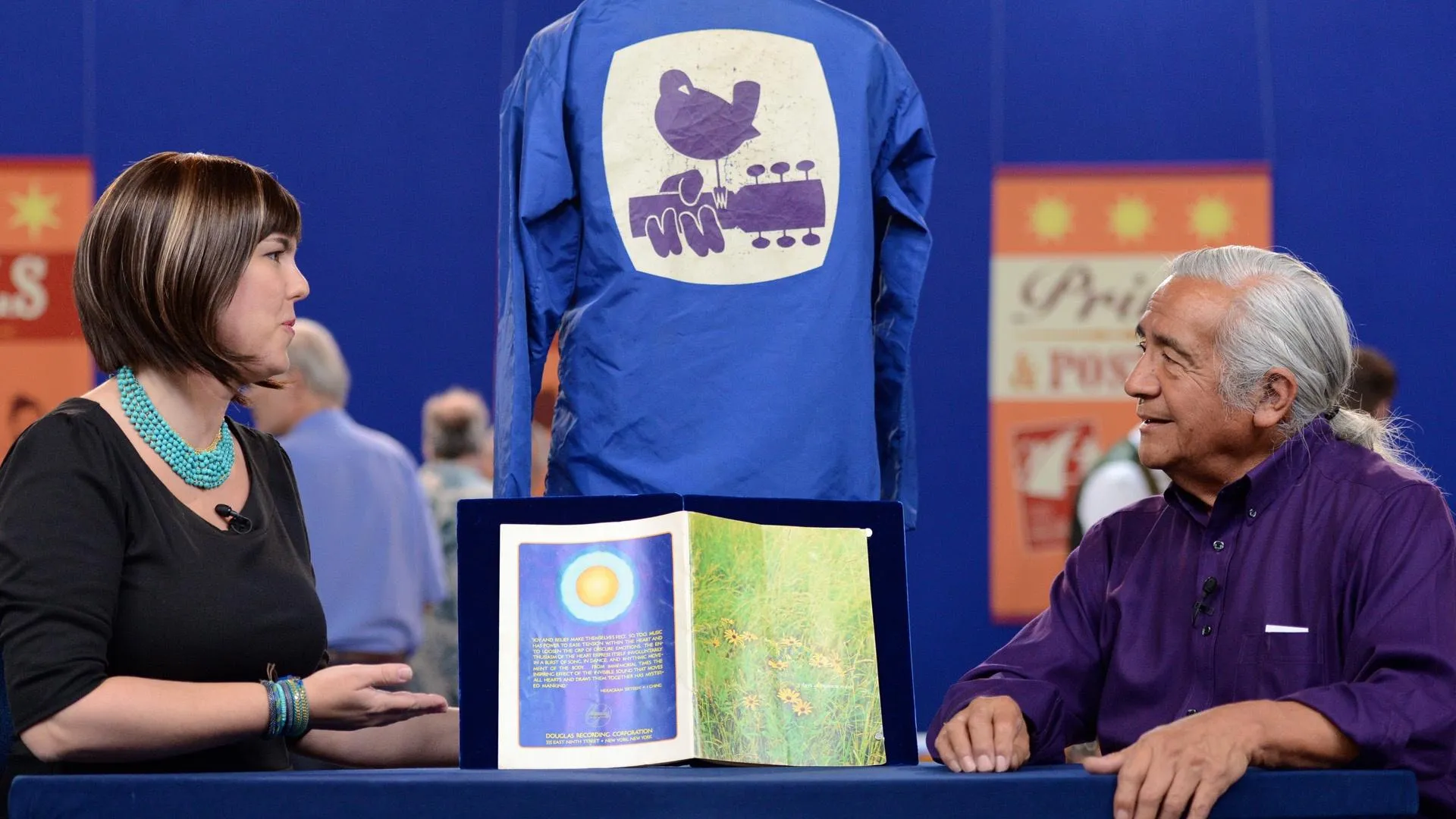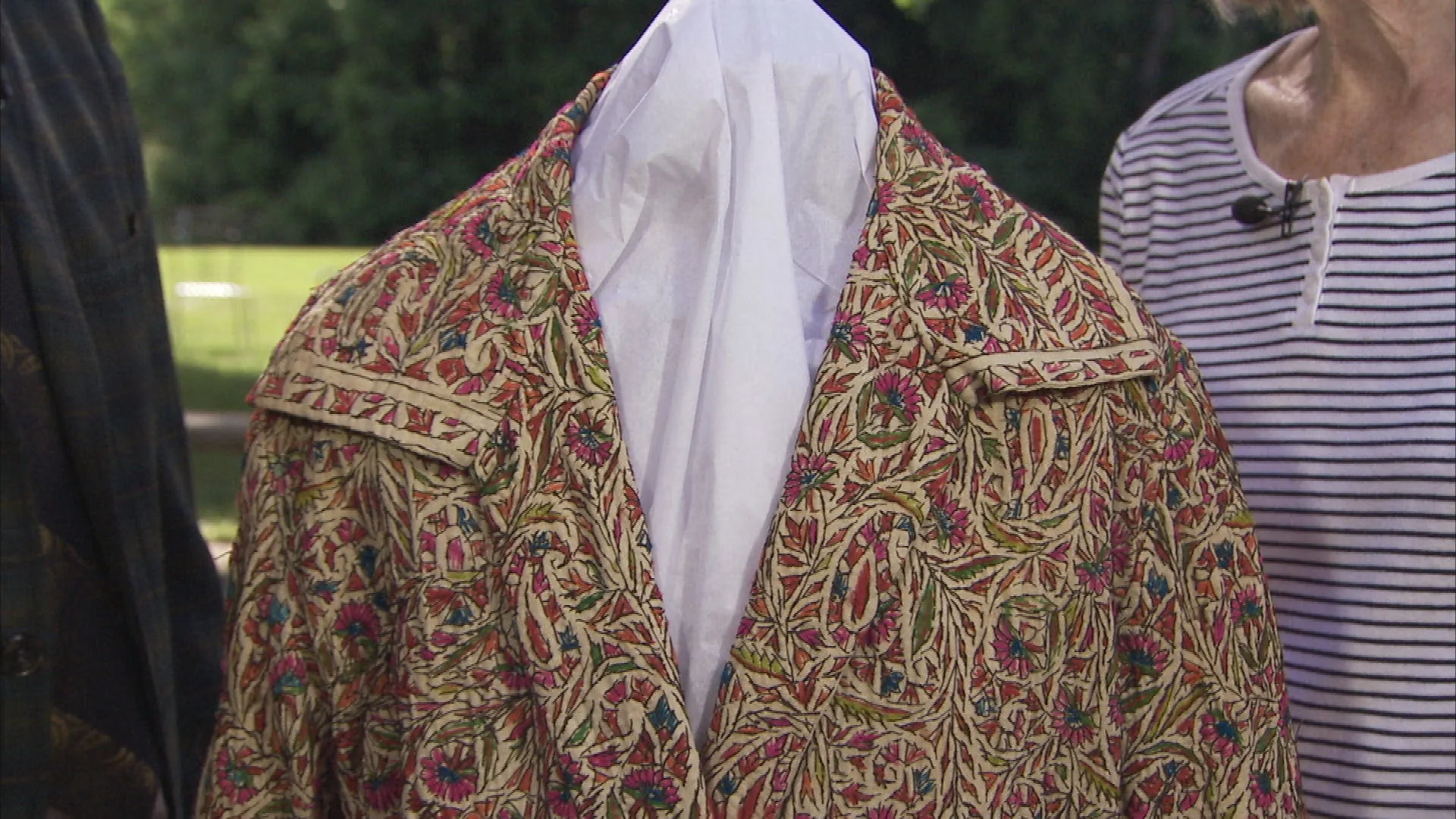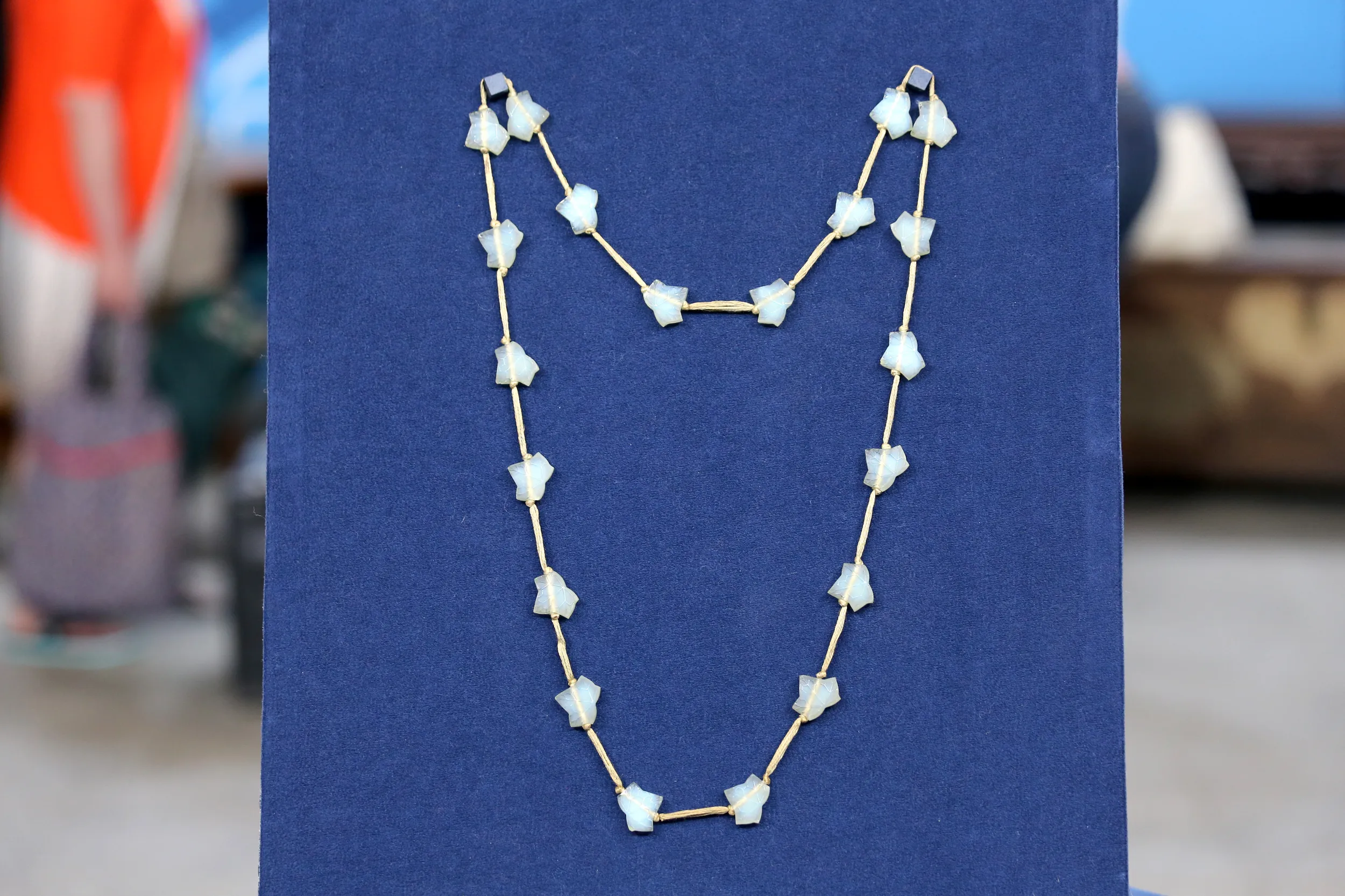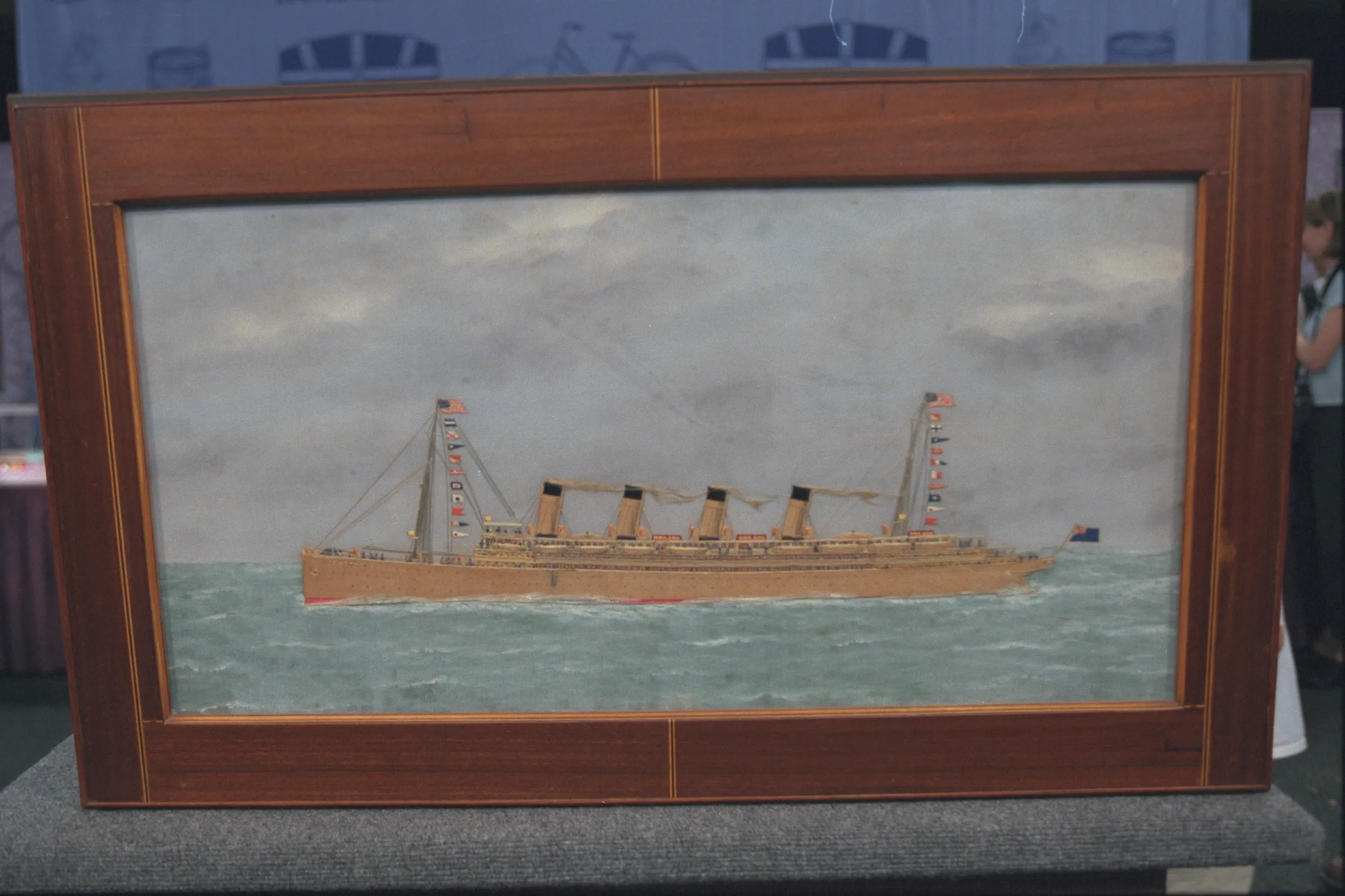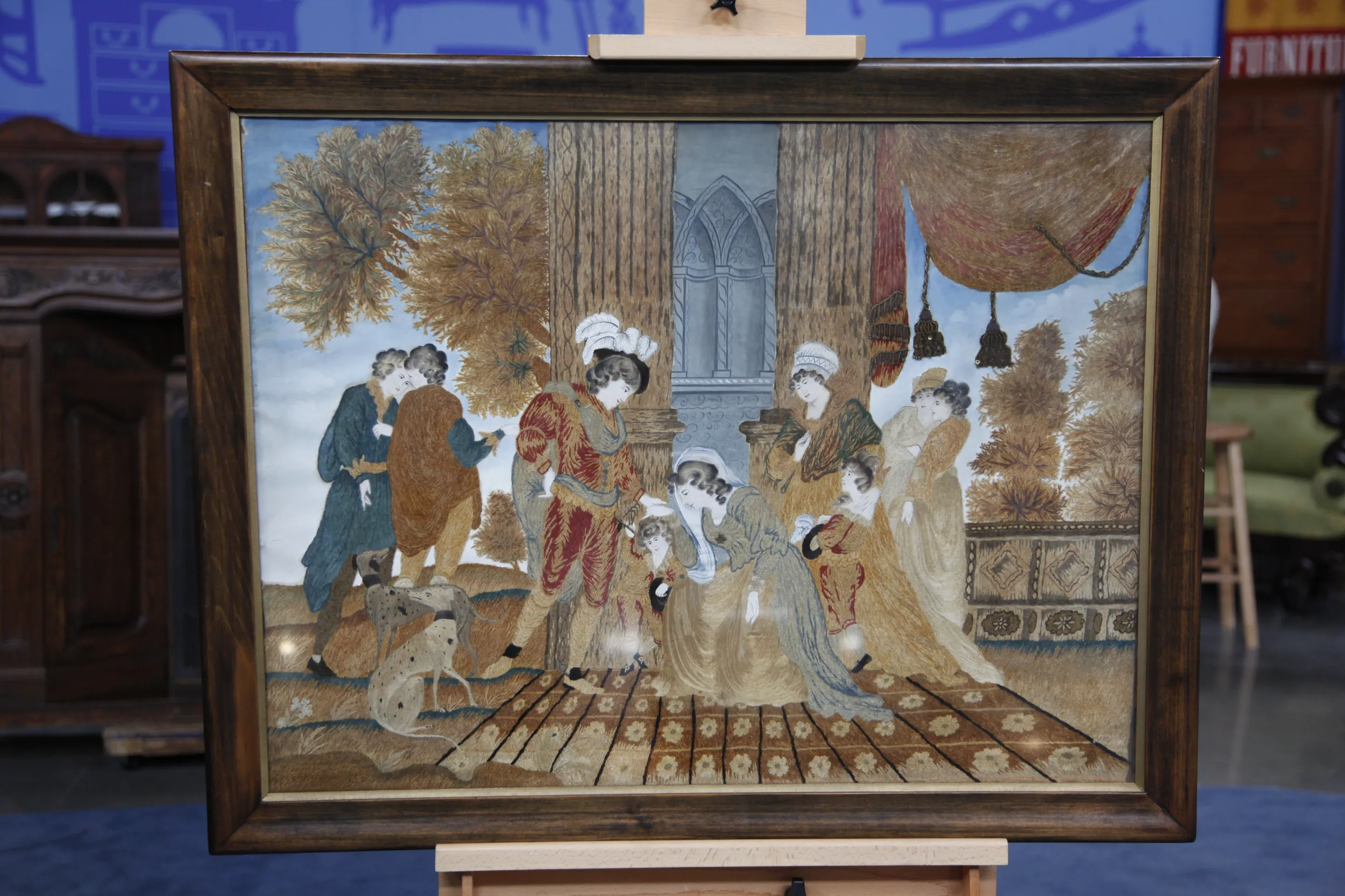GUEST: When I was 11 years old, in 1956, my mother and I were at the auction, and there was a trunk with clothes, and I used to like to play dress-up, so my mother bid on the trunk for me. And when we got it home and we took the things out of the trunk, this was in the bottom of the trunk. So it was a little too fancy to play in, so we just left it in the trunk, and I've kept it all these years and I've always wondered about it.
APPRAISER: The garment is beautiful. It actually is made of silk satin. That's why the fabric is so luscious and so beautiful. The time period is 1870s, and there are several details that we know that make it that. First, the square neckline. That particular look was very popular in the 1870s. Also, where those little threads are, there probably was lace or rosettes or something like that sewn as well, maybe some of the silk organza pleating that we see at the collar. Over the years, that just tends to deteriorate because of the fragile nature of this fabric.
GUEST: The other fabric has really lasted very well.
APPRAISER: It's quite beautiful, and it's actually, if you were this small, you could wear it today.
GUEST: No, I've never been that small.
APPRAISER: Well, the waist of this mannequin is 18 inches. Basically, women of this size corseted, so underneath this garment, you would have actually put on your split bloomers, your chemise, then you would have been laced into a corset, which would have made your waist between three to four or five inches smaller, depending on how tightly you laced. And then on top of that, you would put a slip, you would have put a large bustle pad or cage that actually was collapsible so when you sat down, it would actually fold up. And then you would have put another slip or two just to give all of the shape you see in this garment. And you still had to walk like a lady and act like a lady.
GUEST: But you couldn't run very fast, I'm sure.
APPRAISER: No.
GUEST: I also notice that there's... Like, there should have been a lace of some kind here. That wasn't with the dress when we got it and I wondered what that might have been.
APPRAISER: Actually, the front was laced across, and that would have emphasized her waist even more. It was like another extra layer of corseting. The dress was actually custom-made. There's no label in it, so we do not know who created the dress. But we do know that it was American made. How much did you pay for the trunk?
GUEST: Well, I was 11, so I really don't remember how much, but I can't imagine it would have been more than $30.
APPRAISER: Wedding gowns of this quality are quite collectible for historical value-- museums want them, collectors want them, but young women are also wearing historical garments like this to get married in, and this one's sturdy enough, with a few alterations, it could be worn. In today's market, this gown should retail between $1,500 and $2,000.
GUEST: Well, it's very beautiful, and thank you. I've never seen it on a mannequin, so it really has come alive in a way I've never experienced.

